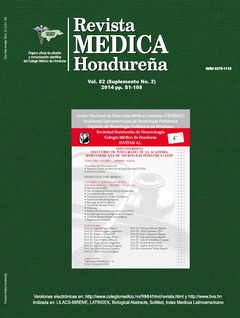Diagnostic orientation in the pediatric patient with dystonia
Keywords:
Classification, Definition, Dystonia, Movement disorders, PediatricsAbstract
In 2013, an international expert consensus committee published an update of the definition and classification of dystonia. In this article, we intend to apply this new classification system to dystonic pediatric patients to improve the diagnostic approach. The new classification system proposes a revision of the previous scheme and identifies two main axes: clinical features (age at onset, body distribution, temporal pattern, isolated dystonia or combined with other neurologic or systemic manifestations) and etiology (type of nervous system pathology, inherited or acquired or unknown cause of dystonias). Clinical features and neuroimagenologic studies would guide the next steps, either genetic tests and/or metabolic studies, including cerebrospinal fluid investigations of neurotransmitter metabolites and pterins, doing first those for the more frequent disorders and for treatable diseases.
Downloads
122




